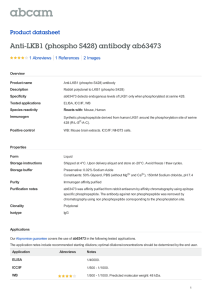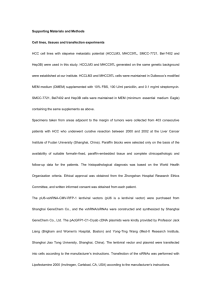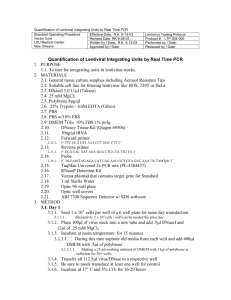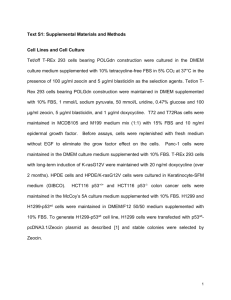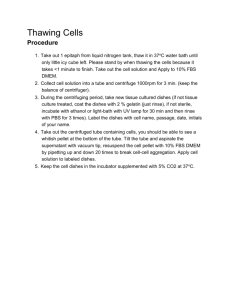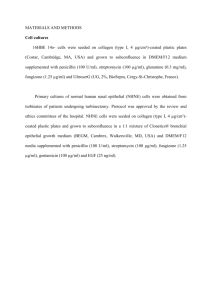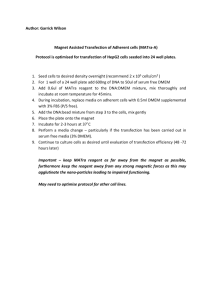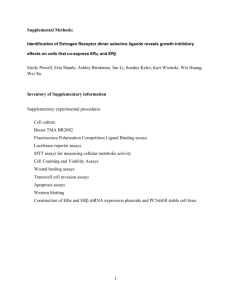Cell culture, expression vectors and transfection assays
advertisement
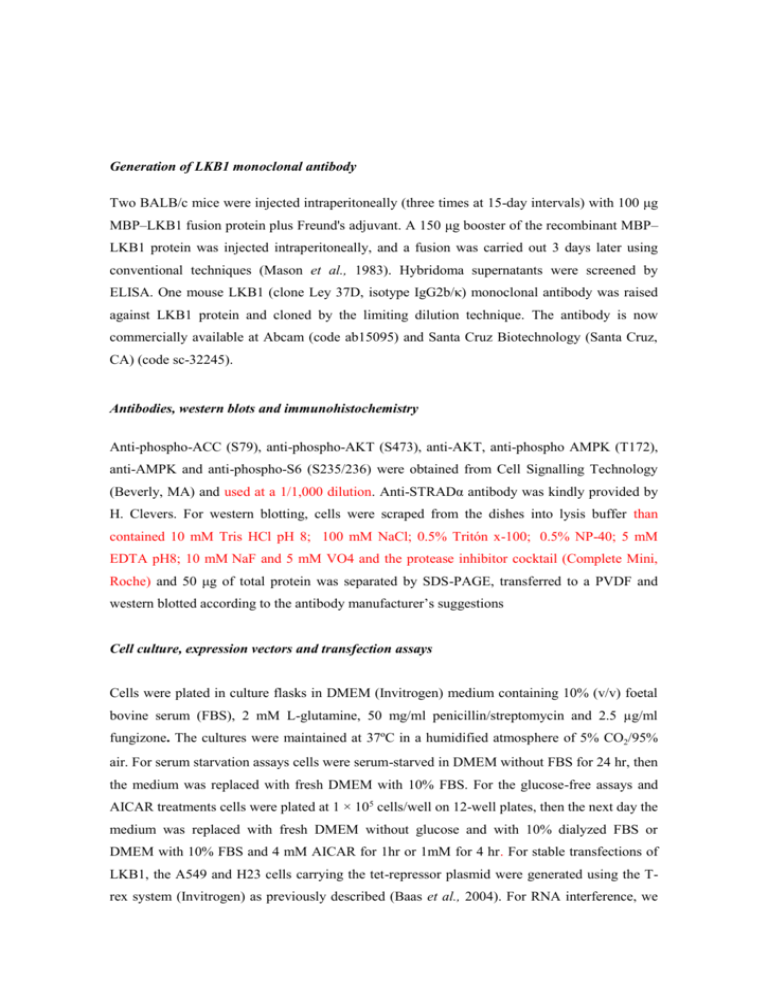
Generation of LKB1 monoclonal antibody Two BALB/c mice were injected intraperitoneally (three times at 15-day intervals) with 100 μg MBP–LKB1 fusion protein plus Freund's adjuvant. A 150 μg booster of the recombinant MBP– LKB1 protein was injected intraperitoneally, and a fusion was carried out 3 days later using conventional techniques (Mason et al., 1983). Hybridoma supernatants were screened by ELISA. One mouse LKB1 (clone Ley 37D, isotype IgG2b/κ) monoclonal antibody was raised against LKB1 protein and cloned by the limiting dilution technique. The antibody is now commercially available at Abcam (code ab15095) and Santa Cruz Biotechnology (Santa Cruz, CA) (code sc-32245). Antibodies, western blots and immunohistochemistry Anti-phospho-ACC (S79), anti-phospho-AKT (S473), anti-AKT, anti-phospho AMPK (T172), anti-AMPK and anti-phospho-S6 (S235/236) were obtained from Cell Signalling Technology (Beverly, MA) and used at a 1/1,000 dilution. Anti-STRADα antibody was kindly provided by H. Clevers. For western blotting, cells were scraped from the dishes into lysis buffer than contained 10 mM Tris HCl pH 8; 100 mM NaCl; 0.5% Tritón x-100; 0.5% NP-40; 5 mM EDTA pH8; 10 mM NaF and 5 mM VO4 and the protease inhibitor cocktail (Complete Mini, Roche) and 50 μg of total protein was separated by SDS-PAGE, transferred to a PVDF and western blotted according to the antibody manufacturer’s suggestions Cell culture, expression vectors and transfection assays Cells were plated in culture flasks in DMEM (Invitrogen) medium containing 10% (v/v) foetal bovine serum (FBS), 2 mM L-glutamine, 50 mg/ml penicillin/streptomycin and 2.5 µg/ml fungizone. The cultures were maintained at 37ºC in a humidified atmosphere of 5% CO2/95% air. For serum starvation assays cells were serum-starved in DMEM without FBS for 24 hr, then the medium was replaced with fresh DMEM with 10% FBS. For the glucose-free assays and AICAR treatments cells were plated at 1 × 105 cells/well on 12-well plates, then the next day the medium was replaced with fresh DMEM without glucose and with 10% dialyzed FBS or DMEM with 10% FBS and 4 mM AICAR for 1hr or 1mM for 4 hr. For stable transfections of LKB1, the A549 and H23 cells carrying the tet-repressor plasmid were generated using the Trex system (Invitrogen) as previously described (Baas et al., 2004). For RNA interference, we used the LKB1-pTER construct that contains LKB1-specific sequences, which are known to block LKB1 expression, cloned into the pTER vector (Baas et al., 2004). The H441 and H1299 cell lines were cotransfected with the LKB1-pTER and with a plasmid containing the green fluorescent protein (GFP) (peGFP, Clontech) and GFP-positive cells were then selected using a fluorescence-activated cell sorter (FACS). Cell proliferations assays For the cell proliferation assays cells were used seeded on 96-well plates at a density of 5,000 cells/well and were allowed to grow for 24 hr before adding the drugs. Cell death was determined as the percentage of propidium iodide-positive cells. Cells were exposed to the drugs for 72 hr and then washed twice with phosphate-buffered saline before being fixed with 0.5% glutaraldehyde, washed again and stained with 1% crystal violet for 30 min. Finally they were washed extensively, solubilized with 15% acetic acid and quantified by measuring the absorbance at 595 nm by means of a microplate reader (Bio-Rad). For the cell viability assay, viable cells (or necrotic cells) were distinguished by using an automated fluorescence microscopy. Cells seeded on 96-well plates were incubated with Hoescht 33342 (10 µM; which stains all nuclei) and propidium iodide (10 µM; which stains nuclei of cells with a disrupted plasma membrane) and analyzed using a Pathway HT imaging system (BD Biosciences). Nuclei of viable and necrotic cells were observed as blue round nuclei and red round nuclei, respectively, and automatically processed with cell-imaging software (Attovision, BD Biosciences). Each experimental condition was assayed in triplicate.

